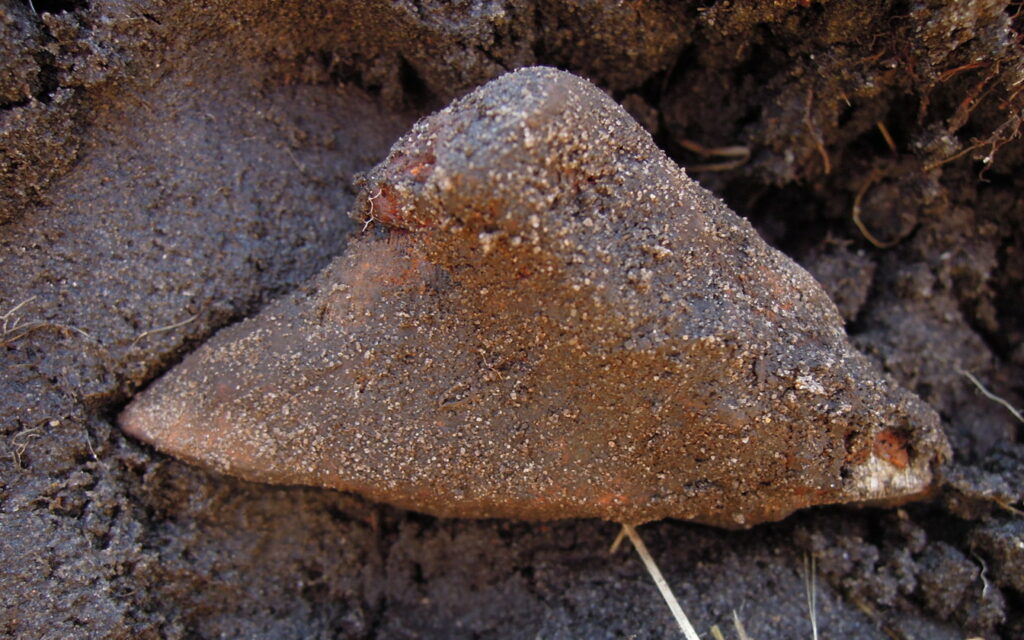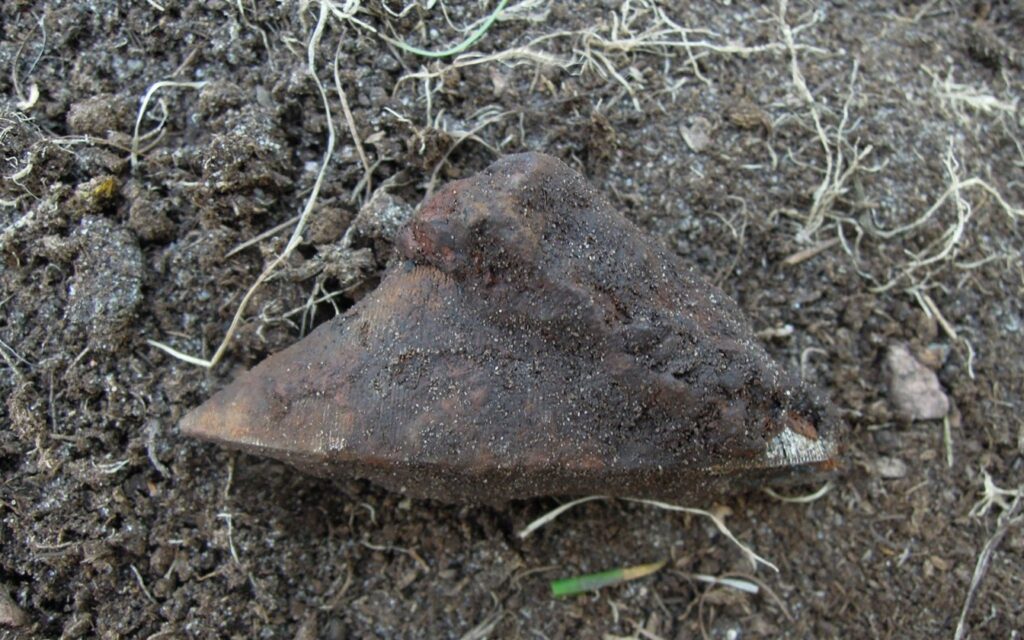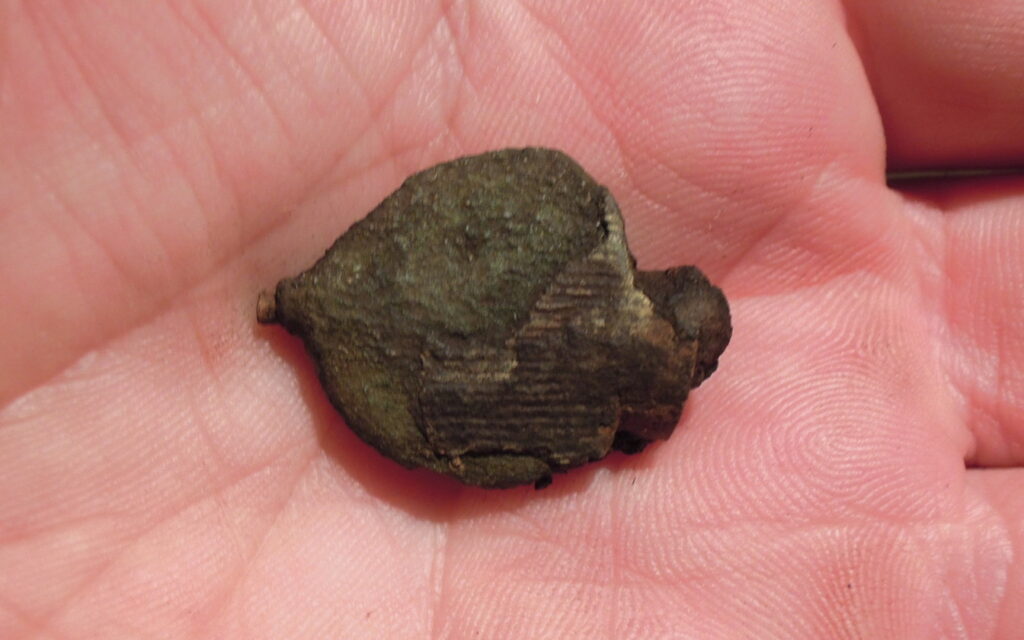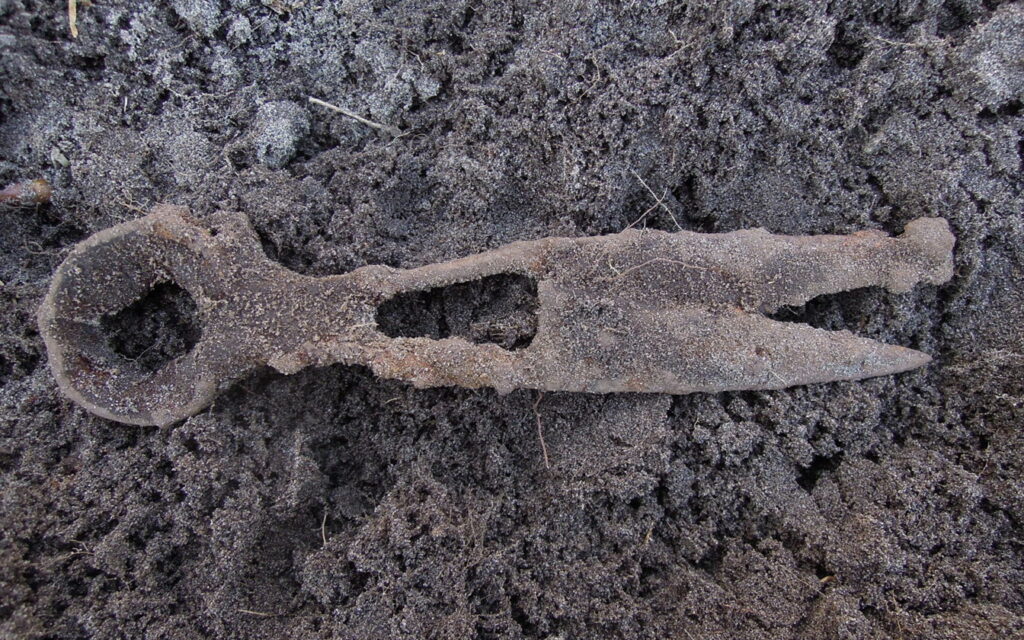Possible Viking-era Grave Discovered in Estonia
Estonia’s biggest find of Viking sword fragments was found on the northern coast of the country last year. Burial artifacts found in the same area this year suggest that the swords were used by local warriors from the ancient county of Rävala.
Mauri Kiudsoo, an archaeologist and curator of the Tallinn Collection of Archeological Research University, said to BSN that, this year’s burial site discovered lied just a few dozen meters from last year’s find and that both the grave and the sword find date back to the 10th century.
Kiudsoo said, “These findings are related.” “A brooch we find suggests that local soldiers of the ancient county of Rävala used the weapons.” Archeologists discovered an in-ground burial site on the north Estonian coast, once the territory of the ancient county of Rävala, earlier this year.
During the plowing of the tomb, archaeologists came across fragments of spearheads, bridles, scythes and single-edged combat knives.
The site also revealed a crossbow-shaped brooch with heads modeled after a poppy capsule that had been disfigured in a fire and a pair of spring scissors.

The same burial site revealed two collections of about one hundred fragments of Viking swords in all last year. It was the single largest find of Viking sword fragments in Estonia. The two collections discovered last year were just 80 meters apart and are very likely cenotaphs – tombs in honor of people whose remains are buried elsewhere.
The news of a discovery of roughly one hundred Viking sword fragments was picked up by many archeological and historical publications all over the world, with most of them associating the find with warriors from Scandinavia.
“This is probably not the case,” Kiudsoo said. “The site discovered this year gives us good reason to believe that the nearby cenotaphs constitute symbolic burials for warriors from Rävala, not Swedish or Danish Vikings who perished on the Eastern Route.”

“It cannot be claimed absolutely, but it is likely the two cenotaphs are dedicated to Rävala warriors who perished in one or two battles or campaigns far from home,” Kiudsoo said.
The archeologist explained that weapons used in the Baltic Sea region were quite similar during the Viking Age. “That is why it is impossible to draw conclusions based on swords and spearheads alone regarding the origin of the people who wielded them. The same types of swords were used by Scandinavians, Estonians’ ancestors, but also Livonians, Curonians or any other peoples who inhabited the region during the Viking Era.”
However, it is possible to draw conclusions of the origin of the warriors using jewelry. Kiudsoo said that types of jewelry are often local as jewelry that was widespread in Gotland was usually worn by people from Gotland and types common in Estonia by people from that region.
“Crossbow-shaped brooches were usually worn by warriors from southwestern Finland and northwestern Estonia on the passage that intersects with the main thoroughfare of the Eastern Route,” Kiudsoo said. The burial site unearthed this year revealed purposefully broken and burnt pieces of a crossbow-shaped brooch with heads modeled after poppy capsules.
Kiudsoo said that flat crossbow-shaped brooches with poppy capsule heads are characteristic of northwestern Estonia. “This type of brooch did not take root in Scandinavia, with only a few found in isolation in Väntholmen in Sweden and the Eketorp fort in Oland,” he added.

Crossbow-shaped brooches with poppy capsule heads resemble crossbow brooches but have different construction and are much larger. It is the largest type of brooch worn in Estonia.
The construction of the burial site discovered this year also points to local origin. Kiudsoo said it was an in-ground cremation burial where the deceased’s burned remains were placed in a hole or a hollow in the ground and covered with earth and rocks. This type of burial was much more widely used in northern Estonia during the Viking Era than previously believed and was also used in western Estonia.
Kiudsoo added that the spring scissors make for one of the more interesting finds from the cremation burial. Such scissors were used both for sheep shearing and cutting cloth at the time.

Only two Estonian burial sites have yielded similar scissors in the past: the Kurna site in Harju County and the Keskvere barrow in Lääne County. Spring scissors have also been found from the Peedu fort, the Rõuge fortified settlement, and the Tartu settlement layer, with the latter dating from 1030-61. It is often difficult to date scissors without context due to the tools lacking distinguishing marks.
Last year’s Rävala finds constitute the largest single collection of Viking Era weapon fragments in Estonia. The find included fragments of sword types deemed rare for the region. The Rävala find yielded dozens of type H hilt swords, also individual type E and V fragments, with the latter two considered rarer.
The reason why the sets did not produce intact swords has to do with ancient burial traditions. Finds from the region and the period typically see weapons accompanying buried warriors “killed”, meaning they have been destroyed or rendered unusable.





